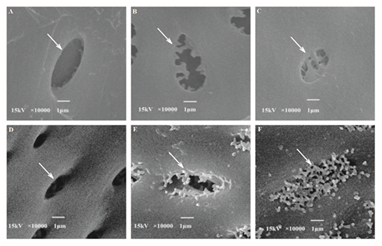作者:Zhao, HW; Yang, SC;Guo, XD; Peng, CJ; Gu, XX; Deng, CY; Chen, LZ
影响因子:3.39
刊物名称:TREE PHYSIOLOGY
出版年份:2018
卷:38 页码:277-287
Mangrove species have developed uniquely efficient water-use strategies in order to survive in highly saline and anaerobic environments. Herein, we estimated the stand water use of two diffuse-porous mangrove species of the same age,Sonneratia apetalaBuch. Ham andSonneratia caseolaris(L.) Engl., growing in a
similar intertidal environment. Specifically, toinvestigate the radialpatterns of axial sapflow density (Js) and understand the anatomical traits associated with them, we measured axial sapflowdensity in situ together with micromorphological observations. A significant decrease ofJswas observed for both species. Thisresult was accompanied by
the corresponding observations of wood structure and blockages in xylem sapwood, which appearedto influence and, hence, explained the acute radial reductions of axial sapflow in the stems of both species. However, higher radialresistance in sapwood ofS. caseolariscaused a steeper decline ofJs radially when compared withS. apetala, thus explaining thelatter’s more efficient use of water. Withoutfirst considering acute reductions inJs into the sapwood from the outer bark, a total of~55% and 51% of water use would have been overestimated, corresponding to average discrepancies in stand water use of 5.6mm day-1forS. apetalatrees and 2.5 mm day-1for S. caseolaristrees. This suggests that measuring radial pattern ofJs is a critical factor in determining whole-tree or stand water use.

Figure 4. Scanning electron micrographs of different pit conditions: a clear pit inS. apetala(arrow) (A); a partially blocked pit inS. apetala(arrow) (B);a blocked pit inS. apetala(arrow) (C); a clear pit inS. caseolaris(arrow) (D); a partiallyblocked pit inS. caseolaris(arrow) (E); and a blocked pit inS.caseolaris(arrow) (F). Scale bars=1μm.

